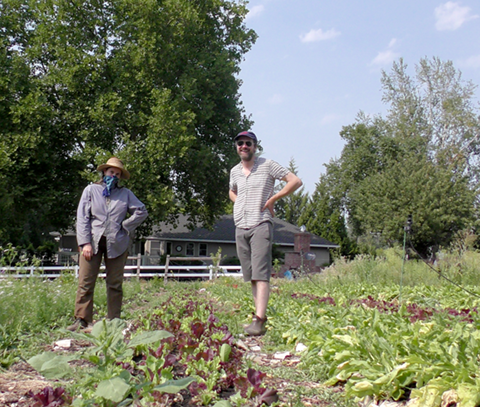Preserving the county’s disappearing farmland

by Annie Bronez, Education and Outreach Specialist, Tualatin Soil & Water Conservation District

As Oregonians, we are lucky to have agriculture deeply seeded in our economy and cultural heritage. The Willamette Valley is one of the most diverse agricultural regions on Earth due to its rich, fertile soils and ample rainfall. Washington County is among the top-producing agricultural counties in the state and is home to numerous farming families, thousands of acres of farms, and a bright array of farm-related businesses. Our agricultural landscape is unique in that it contains an incredible diversity of crops. Our farmers produce almost 100 types of products, ranging from fruits, grains, and nuts to nursery plants, grass seed, and dairy products.
A thriving agricultural landscape benefits everyone, including residents living in urban areas. Washington County farms make huge contributions to the local economy. Farms create jobs directly through hired labor and indirectly through supporting businesses such as equipment dealers, feed stores, and processing plants. Locally grown food is fresher and more nutritious than food that is shipped across the country. Access to local agriculture builds community by creating opportunities for enjoyable experiences and mutually beneficial relationships between producers and consumers. Despite the many benefits local agriculture provides, farmland in Washington County is rapidly disappearing.
As our population grows, there is increasing pressure to convert farmland for other land uses. Urban expansion and development of rural properties has led to the loss of thousands of acres of agricultural land in rapidly growing Washington County. Once this land is converted to non-farm use, it will likely never return to farm production. While farmland loss is a concern across the country, the loss of agricultural land in Washington County is happening much faster than in other areas. In only five years, 23% of our farmland was converted to other uses (Source: 2017 U.S. Ag Census, National Agricultural Statistics Service).
Preserving our farmland requires a variety of approaches and involvement from the entire community. Farmers can ensure their property is protected through a conservation easement. Easements are legal documents that are attached to the property deed. This document outlines what can and cannot be done on the property by future owners. Easement holders, such as land trusts or government agencies like Tualatin Soil and Water Conservation District, enforce the easement once the property changes hands.
Another tool farmers have is a farm succession plan. Many farmers hope to pass their farms on to the next generation of farmers. Transferring a farming business and its assets is more complicated than one would think. Without a plan in place, farmlands may be divided or sold off due to the complex details of estate transfers. That leaves the parcels even more vulnerable to development—and too small to support profitable farms in the future.
Even residents living in urban areas can help conserve Washington County’s farmland. The easiest way to protect farmland is to support local farm businesses. Being an active consumer of locally sourced farm products helps our farmers compete with industrialized farms in other parts of the country. Washington County has nearly a dozen farmers markets where you can get to know your farmers and support them directly. Another way to directly support farmers is through a farm CSA (Community Supported Agriculture). A consumer purchases a share of the farm’s crops up front then receives a regular supply of goods throughout the year. Finally, residents can invest in future farms by supporting organizations like Adelante Mujeres and Rogue Farm Corps who provide training and mentorship for beginning farmers.
With the arrival of spring comes plenty of opportunity for residents to explore and support Washington County farms. A thriving farming community supports a thriving Washington County. To learn more about our special agricultural landscape, visit tualatinswcd.org.




